Kabocha Pork Stir Fry is a simple yet satisfying dish you’ll enjoy when kabocha is in season. It’s a one-pan wonder for a weeknight dinner!
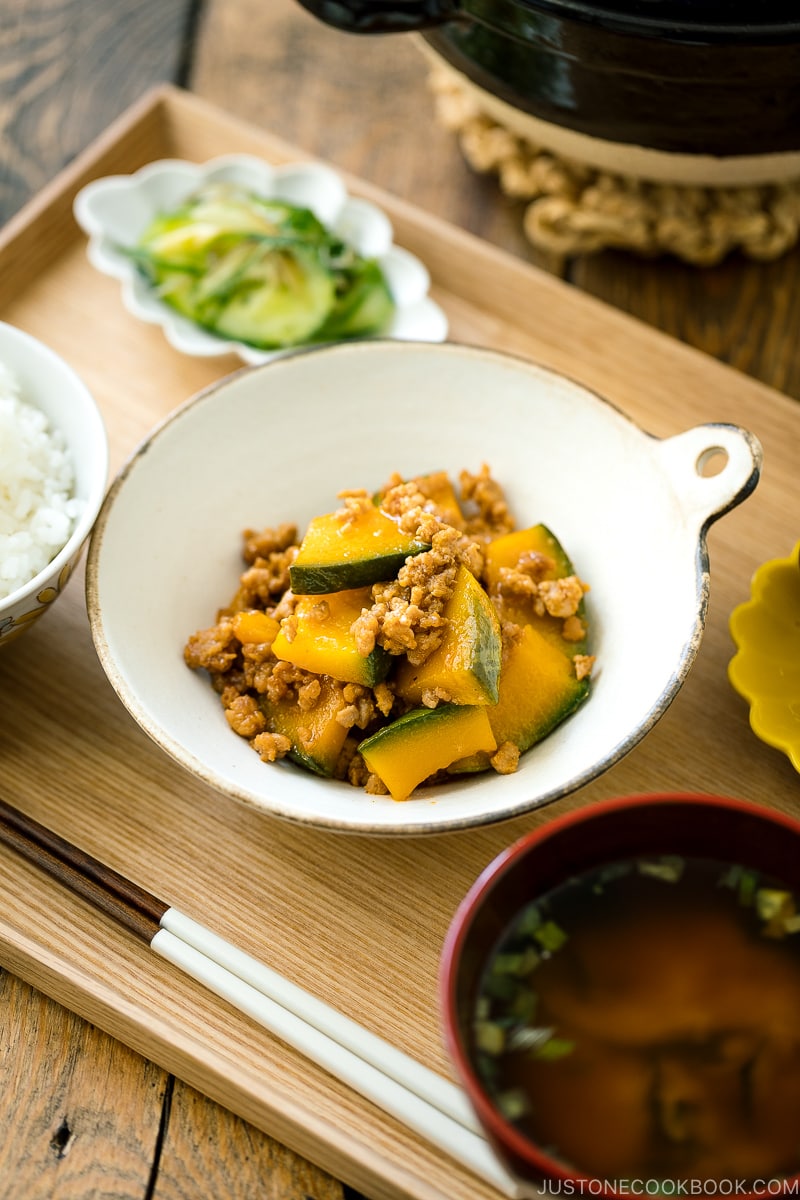
Fall is here and all I can think about is all things kabocha. Soups, desserts, salads – it can do it all. In Japan, kabocha is enjoyed year-round, but here in the US, you can definitely spot this Japanese pumpkin in farmers’ markets, local pumpkin growers, and mainstream grocery stores when it’s in season.
Today I’m sharing a healthy, delicious, yet lifesaving recipe – Kabocha Pork Stir Fry (かぼちゃのそぼろ炒め).
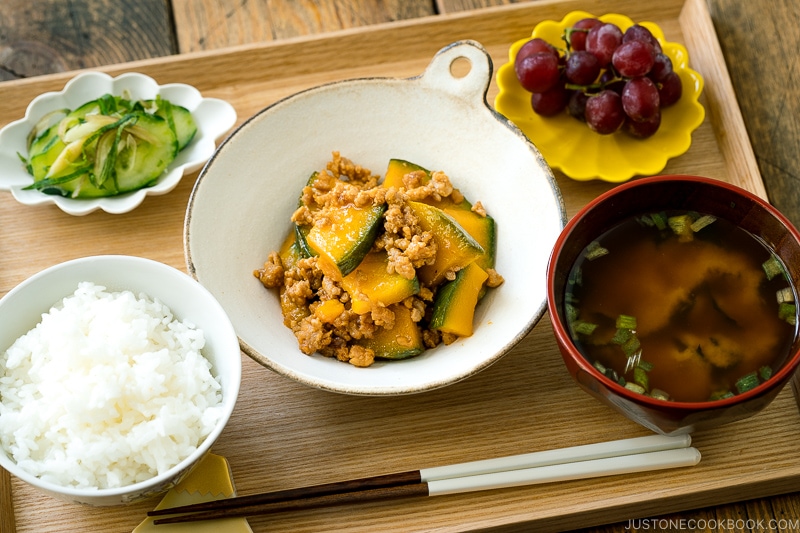
What is Kabocha
Kabocha (かぼちゃ, 南瓜) is a type of winter squash, a Japanese variety of the species Cucurbita maxima. It is also called kabocha squash or Japanese pumpkin in North America.
The green outer skin may be tough, but you’d be surprised that the deep yellow-orange flesh on the inside is known for its outstanding sweetness. Kabocha has a rich texture and flavor that is almost similar to a sweet potato and a pumpkin combined. Some even describe the flavor as close to roasted chestnut.
We treasure the squash so much that it is used in Japanese cooking where it is simmered in dashi or soups, stewed, stir-fried, deep-fried into tempura, or used in salads and desserts.
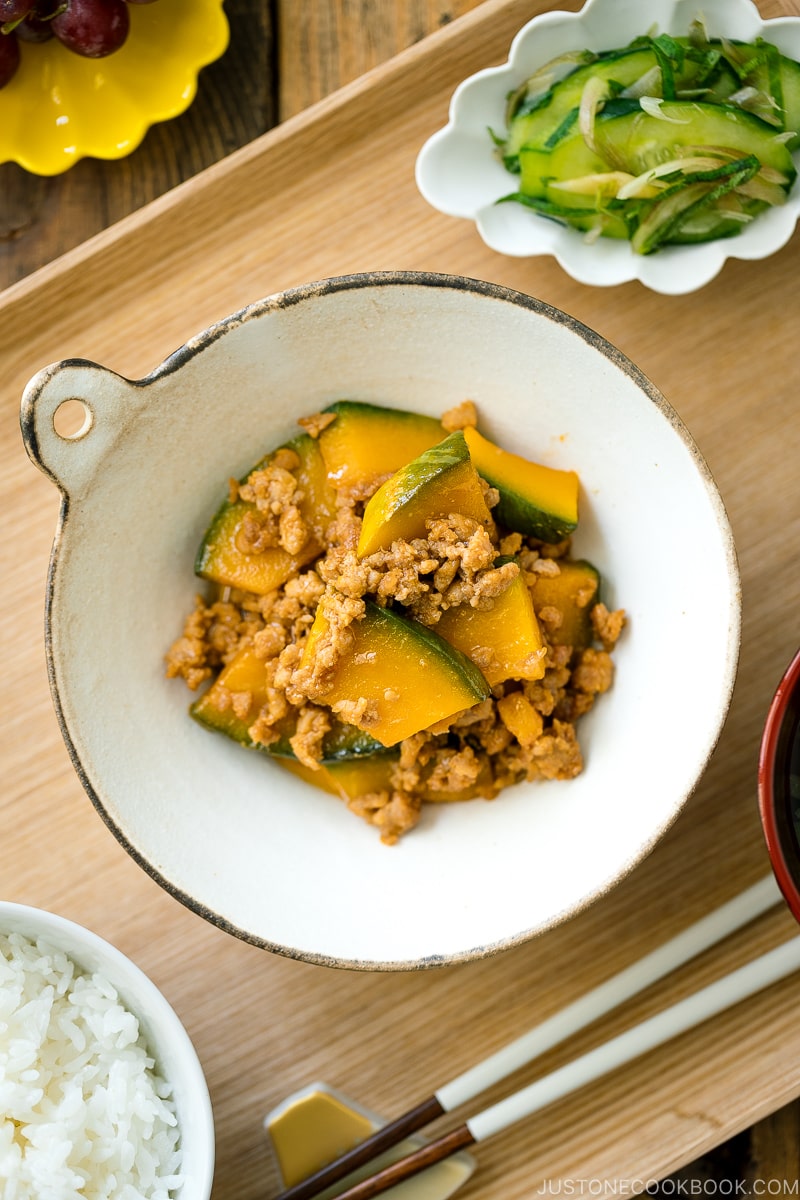
Why You Should Make Kabocha Pork Stir Fry
Here are a few things I want to talk about for this dish:
- It’s really easy and quick to prepare!
- So full of flavor! Make sure to cook extra rice for the second serving.
- Make a big batch and freeze it for later. It’s perfect for emergency days.
- Nutritious and packed with protein.
- You can make it sweeter or spicier…easily customizable to your liking!
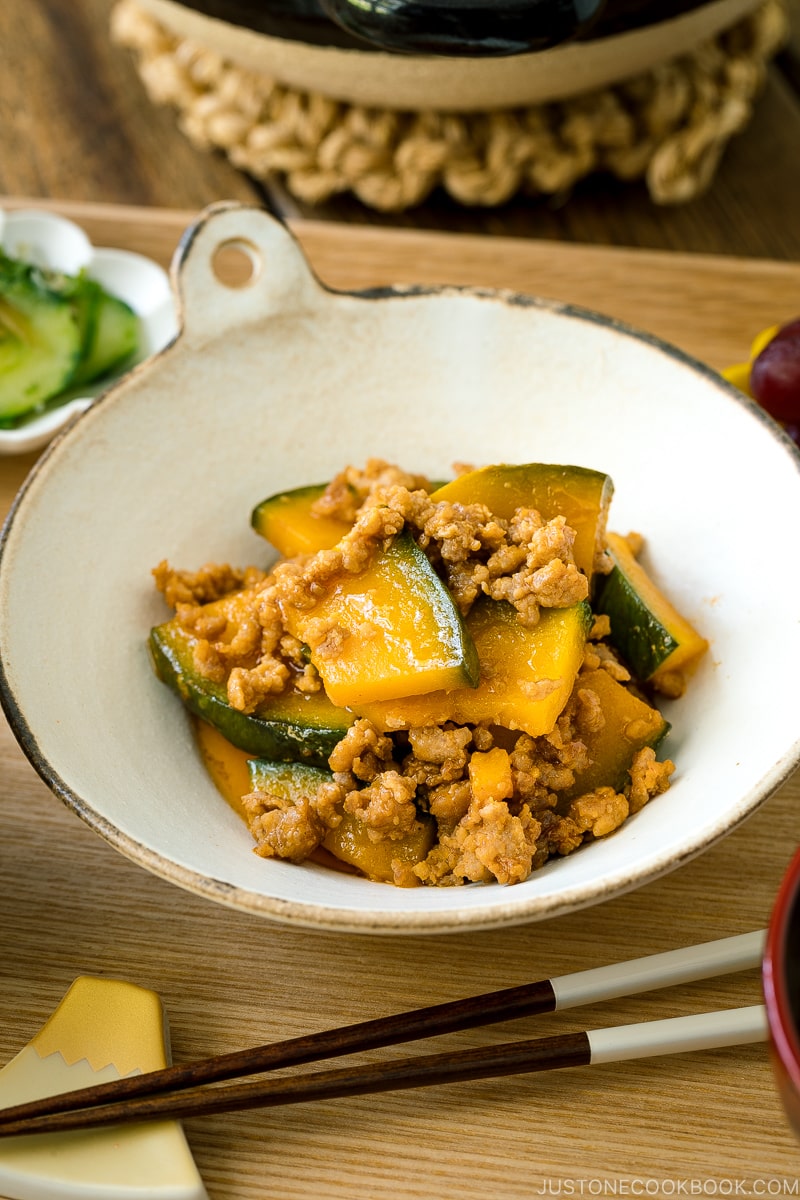
Ingredients for Kabocha Pork Stir-Fry
- Kabocha squash
- Ground pork – ground chicken or turkey would also work. For vegetarians, you can sub with seitan or minced mushrooms.
- Seasonings: sake, soy sauce, oyster sauce, gochujang (other chili sauce for spice; or use miso for a non-spicy version), sugar
How to Make Kabocha Pork Stir-Fry
- Marinate the pork.
- Cut the kabocha and pre-cook in the microwave.
- Stir fry pork until it’s almost done.
- Add kabocha and cook covered to steam.
- Add the seasonings and toss everything together.
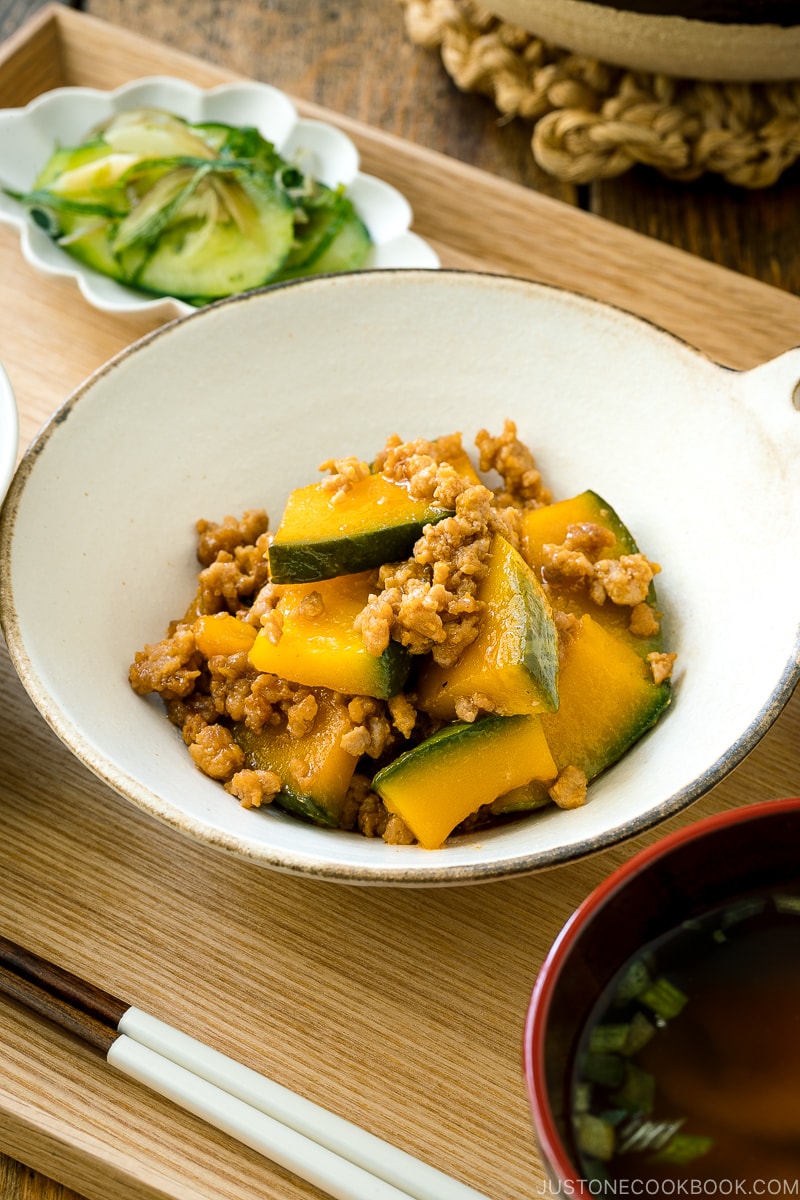
Cooking Tips
Tip #1: Marinate the Meat
Ground meat, especially pork, can get dry from cooking as moisture and juice from the meat escape. The common technique to prevent it from happening is to coat the meat with potato starch (or cornstarch). The combination of sake, soy sauce, and potato starch is often used as a marinade for the meat.
You do not need a lot of marinade for this. Just a thin coating would be more than enough to give the meat a silky coating. Too much potato starch could lead to a very thick sauce which you would want to avoid.
A quick 5-10 minutes is all you need while prepping other ingredients.
Tip #2: Pre-cook Kabocha
Kabocha takes some time to cook through. When it’s done cooking, the texture is easily breakable. Therefore I highly recommend pre-cooking kabocha to give it a head start.
Then add the kabocha to the dish, and cook it together with other ingredients so the kabocha can soak up all the flavors.
Tip #3: Adjust the Seasonings
Feel free to adjust the spiciness and sweetness as you like. You can completely omit gochujang if your children are not used to spicy flavor. I slowly increased the amount of gochujang so my kids developed the palate for spicy food over time.
This dish also works great with a bit more sweetness. However, if you prefer, you can omit the sugar completely to keep it savory.
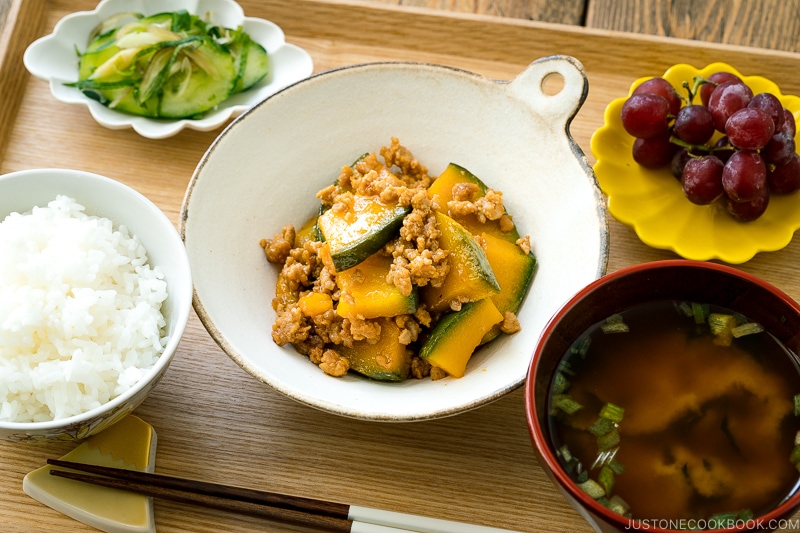
Wish to learn more about Japanese cooking? Sign up for our free newsletter to receive cooking tips & recipe updates! And stay in touch with me on Facebook, Pinterest, YouTube, and Instagram.
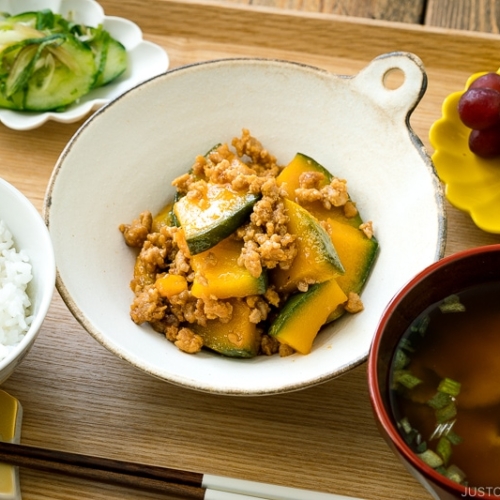
Kabocha Pork Stir Fry
Video
Ingredients
- 1 clove garlic
- 6 oz ground pork (or use turkey or chicken; substitute seitan or minced mushrooms for vegetarian)
- ¼ kabocha squash (11 oz, 213 g; or use butternut or acorn squash)
- 1 Tbsp neutral oil
For the Pork Marinade
- ½ tsp soy sauce
- 1 tsp sake
- 1 tsp potato starch or cornstarch
For the Stir-Fry Seasoning
- 1 Tbsp sake
- 1 Tbsp soy sauce
- 2 tsp oyster sauce
- 1 tsp gochujang (Korean chili paste) (you can substitute it with other chili sauce for spicy version; or use miso for non-spicy version)
- 1 tsp sugar
Instructions
- Gather all the ingredients. Cut 1 clove garlic into thin slices.

To Make Pork Marinade
- In a medium bowl, combine ½ tsp soy sauce, 1 tsp sake, and 1 tsp potato starch or cornstarch and mix it all together.

- Add 6 oz ground pork and mix well. Set aside.

To Make the Stir-Fry Sauce
- In a small bowl, combine 1 Tbsp sake, 1 Tbsp soy sauce, 2 tsp oyster sauce, and 1 tsp gochujang (Korean chili paste).

- Add 1 tsp sugar and mix all together. Set aside.

To Prepare Kabocha
- With a spoon, remove the seeds from ¼ kabocha squash. Cut the kabocha block in half so it‘s smaller and easier to slice. Tip: We eat kabocha skin in Japan! If there are tough scars on the skin, shave them off. We remove the skin only when you want to feature the kabocha‘s yellow-orange color, such as kabocha soup or kabocha pie or pudding (the color won‘t be pretty if you mix in the green skin).

- Cut the kabocha into thin slices, roughly ⅛ inch (3 mm) thick. If the kabocha pieces are too big, cut them in half.

- In a microwave-safe glass container, put kabocha slices and 1 Tbsp water. Place a paper towel on top and microwave for 2 minutes (depending on your microwave wattage).

- Check the kabocha‘s doneness with a wooden skewer. It should be 80% cooked through (as we will stir-fry later). Do not overcook them because they will break into pieces while stir-frying.

To Stir-Fry
- In a large frying pan, heat 1 Tbsp neutral oil on medium heat and cook the garlic until fragrant.

- Add the marinated meat and cook until no longer pink.

- Add the kabocha slices and coat them with oil.

- Cook covered on low heat until the kabocha is fully cooked, roughly 5 minutes.

- Insert a skewer to check the doneness. Add the stir-fry seasoning.

- Increase the heat and stir-fry to coat the ingredients with the sauce. When the sauce has reduced, it‘s done.

- Transfer to a serving dish. Enjoy!

To Store
- You can keep the leftovers in an airtight container and store in the refrigerator for up to 3 days or in the freezer for a month.
Nutrition
Editor’s Note: This post was originally published on September 19, 2011. The post has been updated with new content, new images, and new video in September 2021.
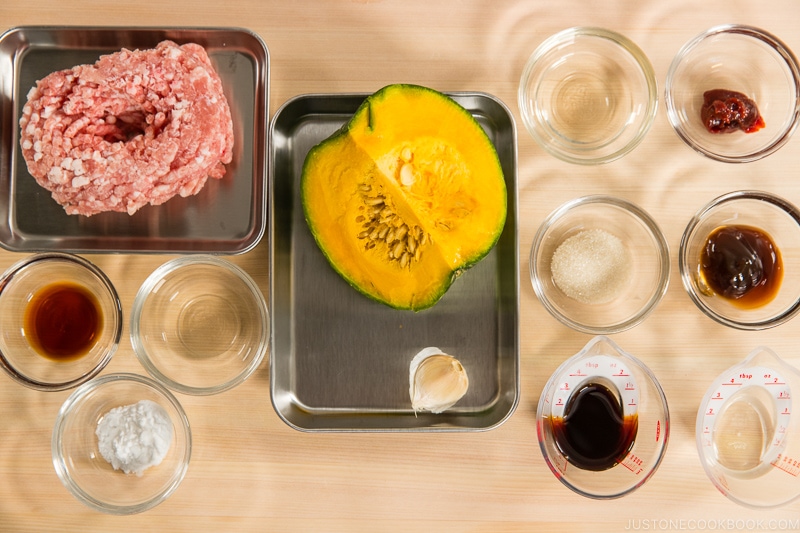
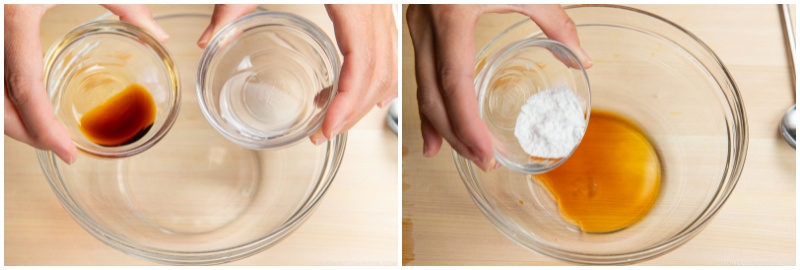
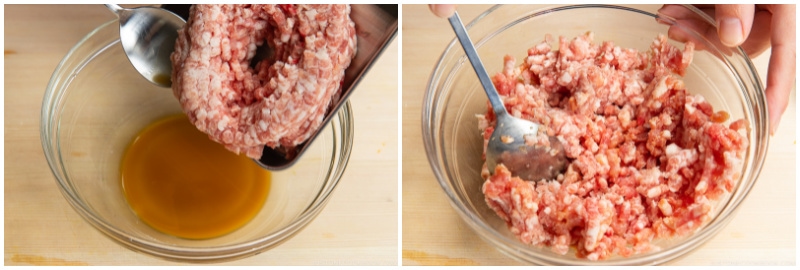
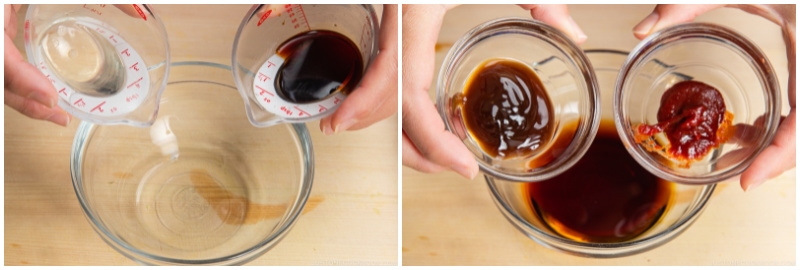
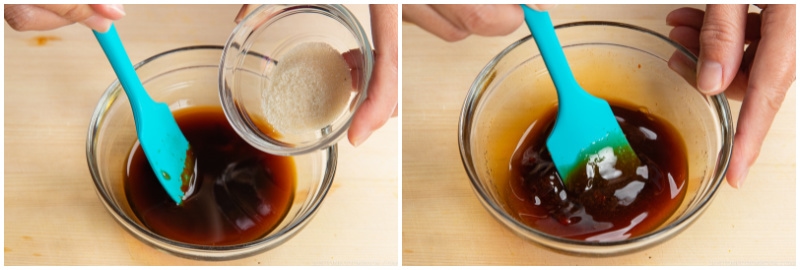
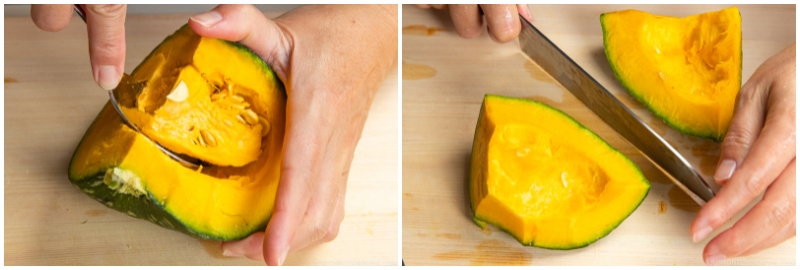
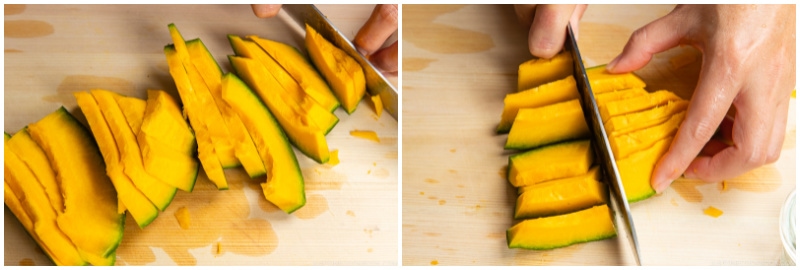
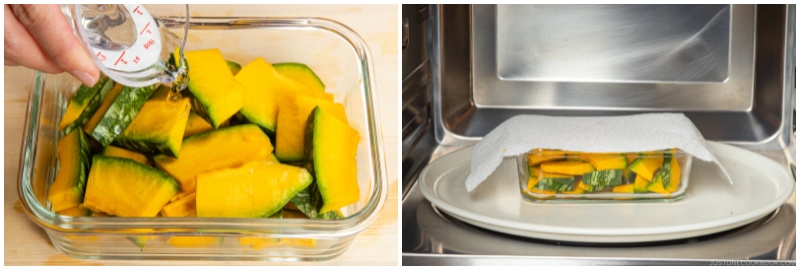
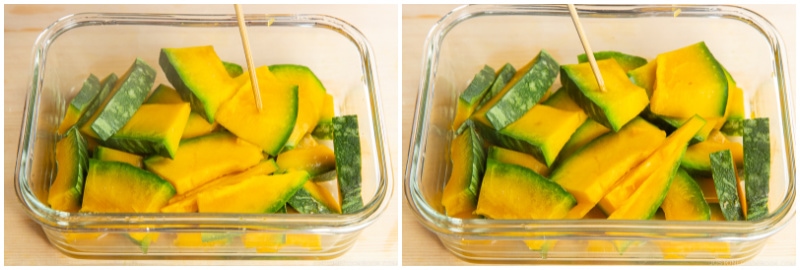
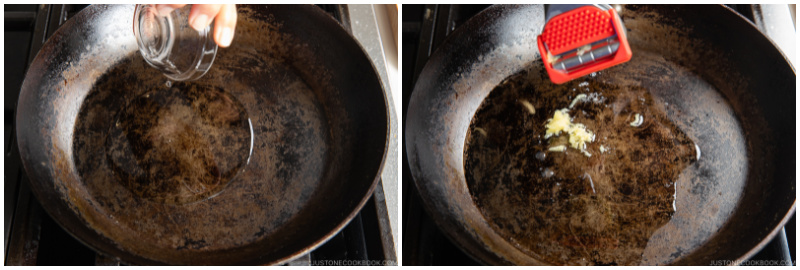
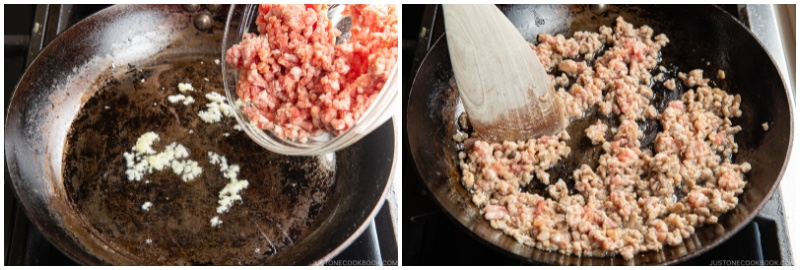
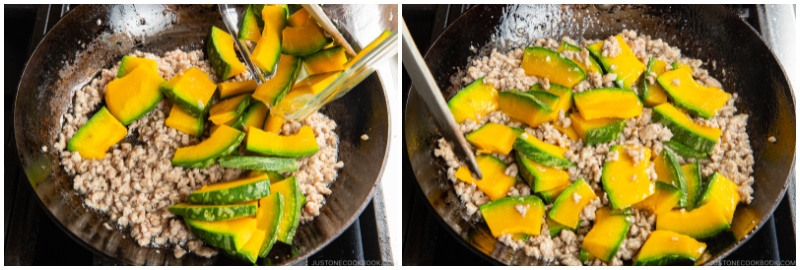
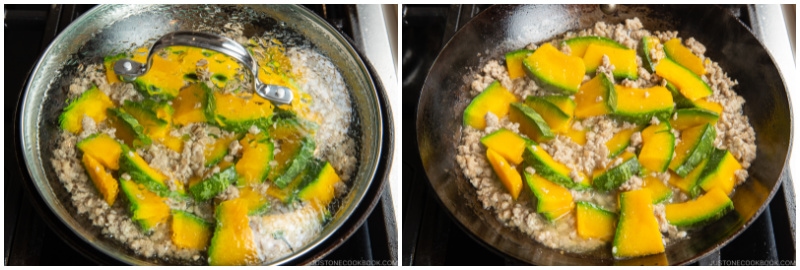
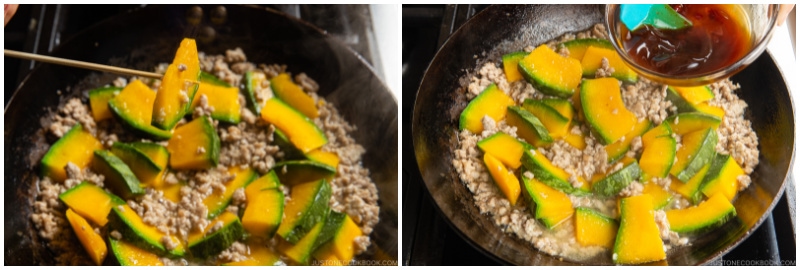
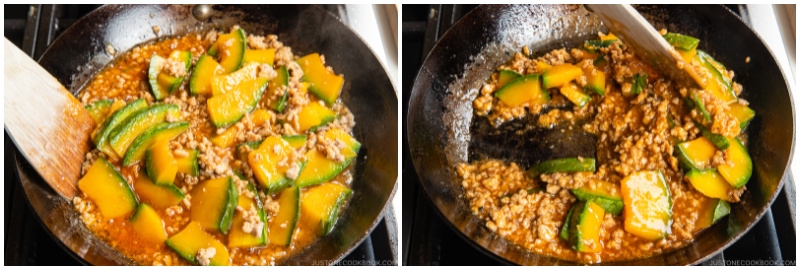
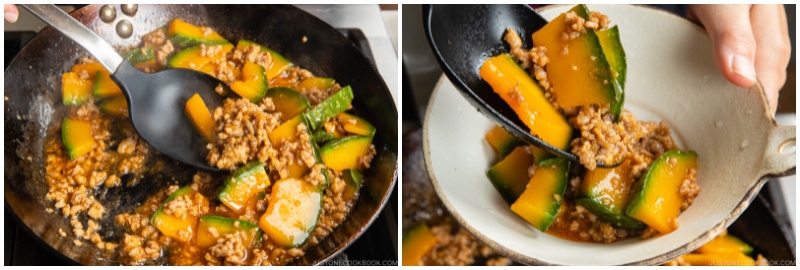

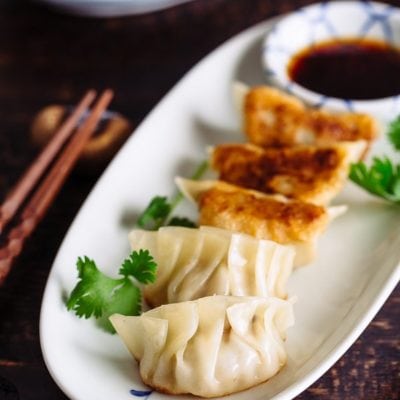
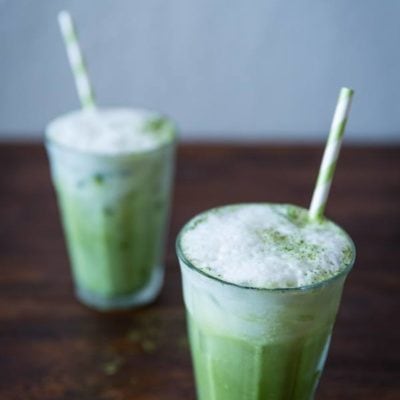

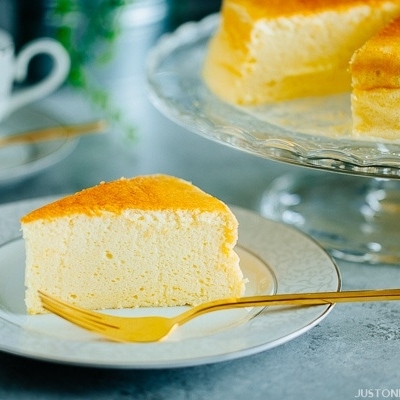
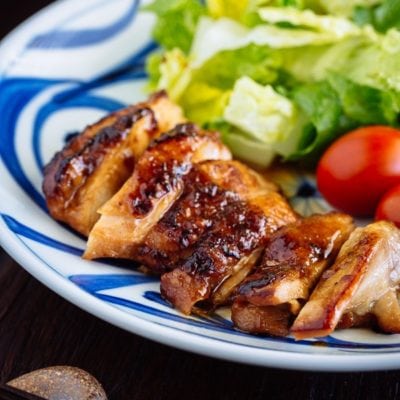

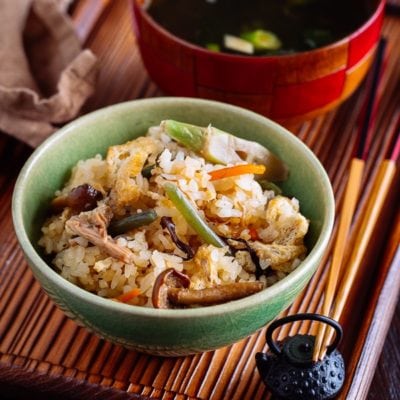
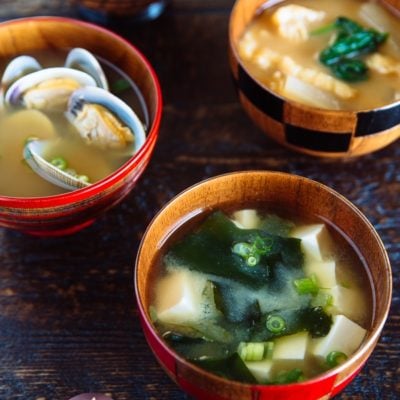

Just made this today & added it to my keeper recipes! It was great even though I did accidentally overcook it. The squash did start to fall apart but it still tastes great!
Hi, Crystal! Wow! Thank you very much! We’re so glad you enjoyed Nami’s recipe!
Thank you for including this recipe in your keeper list!🤗